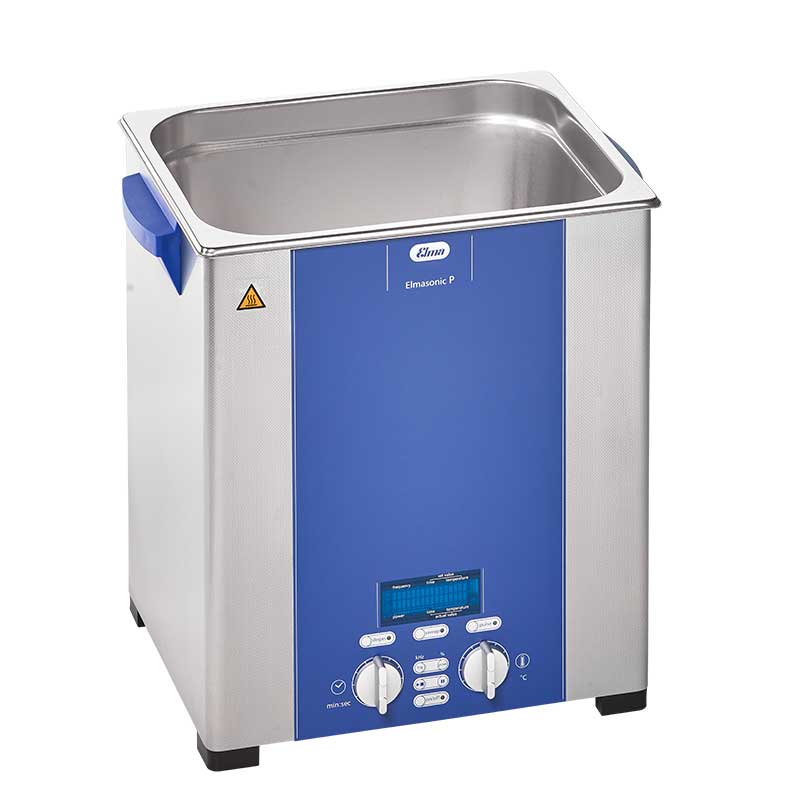
Ultrasonic Cleaner Boosts Efficiency
Client Testimonial
We love to hear from our clients and, when possible, share their story with you. The information below outlines how one of our client’s ultrasonic cleaner boosts efficiency in their business.
How Their Ultrasonic Cleaner Boosts Efficiency
In my shop selecting the correct ultrasonic frequency to employ when operating the ultrasonic cleaner depends on the items being cleaned and what is being removed. Coarse cleaning to remove heavy contaminants is generally best performed at lower frequencies such as 37 kHz because it delivers stronger cavitation action. Fine cleaning requirements use higher frequencies such as 80 kHz to create smaller, relatively gentle cavitation bubbles that more easily penetrate blind holes, threads, tight crevices and tubes.
It’s not unusual for us to get jobs that call for both coarse and fine cleaning on the same part. Sure, there are dual-frequency cleaners out there but, for the most part, they require manually switching frequencies from one to the other. Also, there are other variables we need to take into account depending on the objects being cleaned, all of which require close attention on the part of our team.
Ultrasonic Cleaning Automation is the Key
Then I heard about the Elmasonic P line of ultrasonic cleaners that can be programmed to automatically switch between 37 and 80 kHz at 30-second intervals. What a time saver in terms of monitoring and manually switching the frequencies! We’re able to take on more jobs with complex parts having large surfaces to be cleaned at 37 kHz and small holes, crevices and other tight spots at 80 kHz.
Like the TV ads say, “But wait, there’s more!” These Elmasonic P ultrasonic cleaners are automated from the get-go. For example, we can program degassing new ultrasonic cleaning solutions, set the auto-start start after degassing and after the solution is pre-heated to a set temperature, key in the Pulse mode to increase ultrasonic cleaning power by 20% to remove stubborn contaminants, and engage the Sweep mode to improve ultrasonic sound distribution in the bath. We can control the ultrasonic power from 30% to 100%, which is important because too much power can damage sensitive parts.
Cleaning time can be programmed from 1 one minute to 60 minutes or continuous, with auto-shutoff after 12 hours.
An easily read LED display shows set frequency and power, set and actual time and temperature and otherwise present a snapshot of the operating parameters.
A Cleaner That is Strong Enough for the Job
Along with their efficiency-boosting features these cleaners are built to last. The cleaning tank and cabinet are constructed of cavitation-resistant, easily cleaned AISI type 321 stainless steel to provide strength and corrosion resistance. Ultrasonic cleaner maintenance is further facilitated by a rear-mounted drain that is controlled by a side mounted drain knob for removing spent cleaning solution.
Our 3-gallon Elmasonic P120H ultrasonic cleaner is well on the way for paying for itself in terms of higher efficiencies in our shop. The ultrasonic specialists at our supplier Tovatech were very helpful in specifying which model we should use, in selecting the cleaning solutions that best match our operations, and in getting the equipment installed.
Learn More About How an Ultrasonic Cleaner Boosts Efficiency
What frequencies do you employ for ultrasonic cleaning in your shop? How much time do you use in programming and monitoring your ultrasonic cleaner? Call or chat with our team. We can help you decide on the ultrasonic cleaners that is right for your business.

